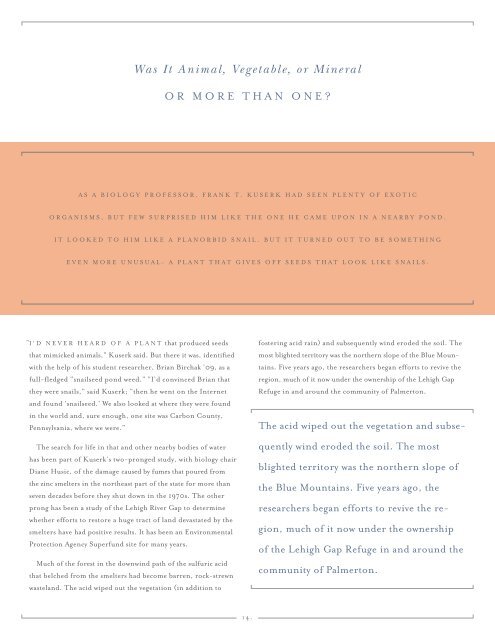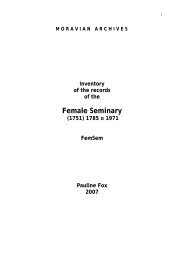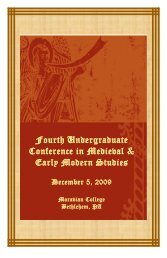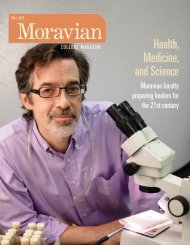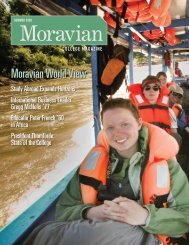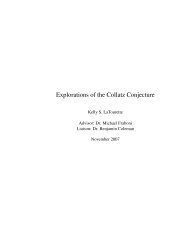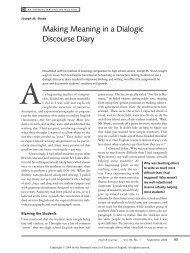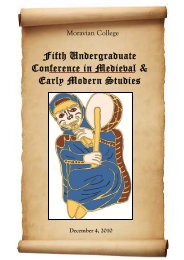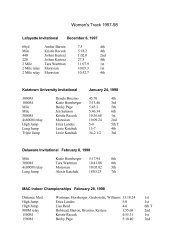Create successful ePaper yourself
Turn your PDF publications into a flip-book with our unique Google optimized e-Paper software.
“<br />
I’d never heArd of A PLAnT that produced seeds<br />
that mimicked animals,” kuserk said. but there it was, identified<br />
with the help of his student researcher, brian birchak ’09, as a<br />
full-fledged “snailseed pond weed.” “I’d convinced brian that<br />
they were snails,” said kuserk; “then he went on the Internet<br />
and found ‘snailseed.’ We also looked at where they were found<br />
in the world and, sure enough, one site was Carbon County,<br />
Pennsylvania, where we were.”<br />
The search for life in that and other nearby bodies of water<br />
has been part of kuserk’s two-pronged study, with biology chair<br />
diane husic, of the damage caused by fumes that poured from<br />
the zinc smelters in the northeast part of the state for more than<br />
seven decades before they shut down in the 1970s. The other<br />
prong has been a study of the Lehigh river gap to determine<br />
whether efforts to restore a huge tract of land devastated by the<br />
smelters have had positive results. It has been an environmental<br />
Protection Agency Superfund site for many years.<br />
Much of the forest in the downwind path of the sulfuric acid<br />
that belched from the smelters had become barren, rock-strewn<br />
wasteland. The acid wiped out the vegetation (in addition to<br />
Was It Animal, Vegetable, or Mineral<br />
or More ThAn one?<br />
AS A bIoLogY ProfeSSor, frAnk T. kUSerk hAd Seen PLenTY of exoTIC<br />
orgAnISMS, bUT feW SUrPrISed hIM LIke The one he CAMe UPon In A neArbY Pond.<br />
IT Looked To hIM LIke A PLAnorbId SnAIL. bUT IT TUrned oUT To be SoMeThIng<br />
even More UnUSUAL: A PLAnT ThAT gIveS off SeedS ThAT Look LIke SnAILS.<br />
14.<br />
fostering acid rain) and subsequently wind eroded the soil. The<br />
most blighted territory was the northern slope of the blue Mountains.<br />
five years ago, the researchers began efforts to revive the<br />
region, much of it now under the ownership of the Lehigh gap<br />
refuge in and around the community of Palmerton.<br />
The acid wiped out the vegetation and subse-<br />
quently wind eroded the soil. The most<br />
blighted territory was the northern slope of<br />
the blue Mountains. five years ago, the<br />
researchers began efforts to revive the re-<br />
gion, much of it now under the ownership<br />
of the Lehigh gap refuge in and around the<br />
community of Palmerton.


